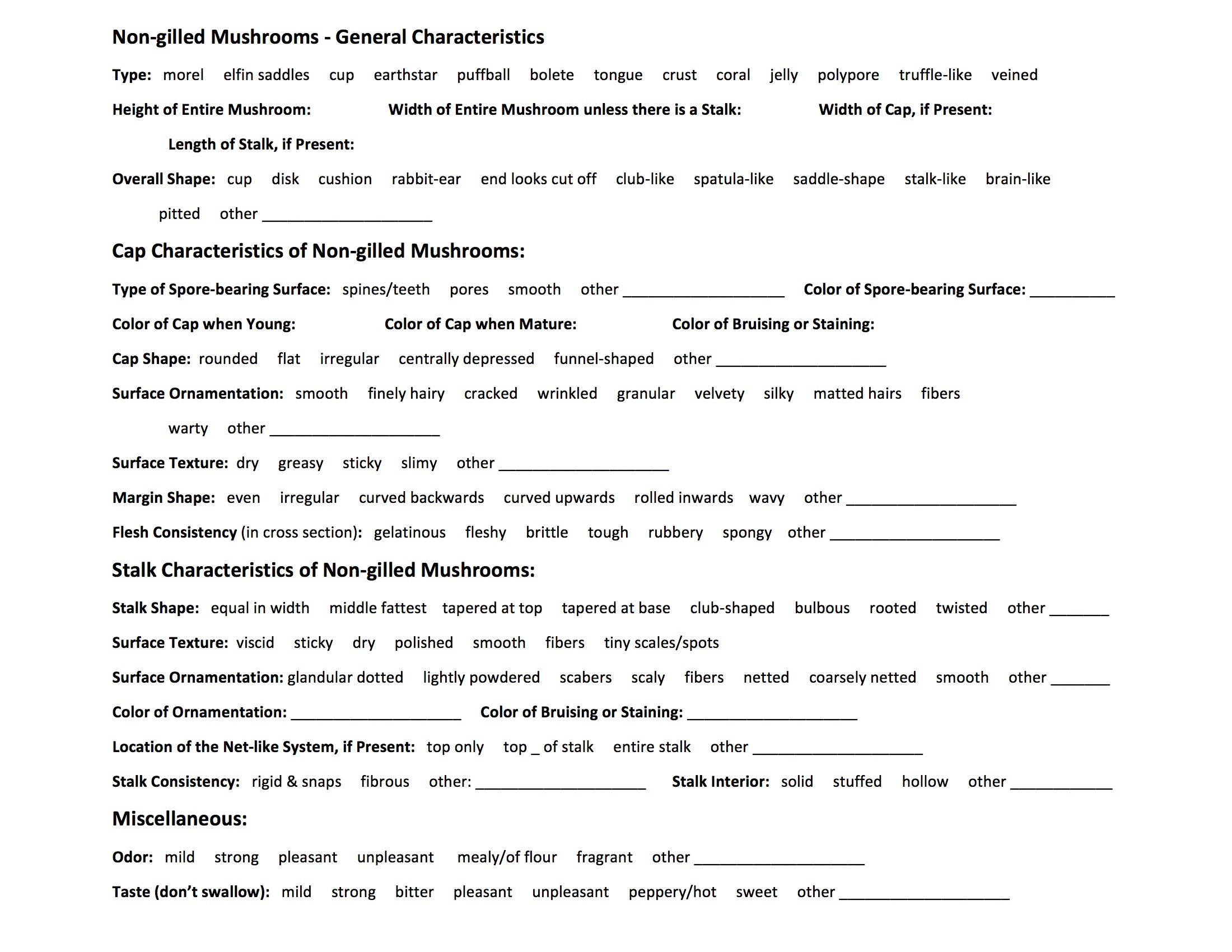Important Features to Observe in the Field
This handout is provided as a pdf file so that you can print it out and use it in the field until you become more familiar with what is important to observe about wild mushrooms. When you print the handout, make sure your printer is set to landscape format.
As you begin to learn about mushrooms, one of the things you will want to do is go outside where you can observe how and where they grow: in the woods, in some parks, and even in your own yard. If possible, join a local mushroom club so that you can go on forays with more experienced people who will help you ID your mushrooms. Then take them home and use this handout to observe their features, if you didn’t already do this while in the field.
Most of the features used in this handout are easy to understand, but there are some descriptions that might be unfamiliar to you. I have tried to use words that are self-describing or defined the word in the handout. An example is the use of “Surface Ornamentation” of the cap where I list many descriptions of what this phrase means, such as the cap is smooth, cracked, wrinkled, has warts, etc. Another one is “Latex Present?” This is the liquid that appears when you cut or injure the gills of some mushrooms, especially in the genus Lactarius. There can be different colors that appear, and they can even change to another color in time, some quickly and some more slowly.
Learn the parts of a mushroom that are provided on this website. This will make words such as “partial or universal veil” more understandable, or what a “volva or a ring” is. Under the menu item “Mushroom Info” then “Learn the Parts” I have provided pictures on parts of a mushroom, gill attachments, and the many cap shapes. You can also learn how to make a spore print under the same menu item then “How to Make a Spore Print.” The color of the spore deposit is one of the most important features needed to correctly ID many mushrooms.
The term “Spore-bearing Surface” is usually where the gills, teeth, ridges, or pores are located on some mushrooms, but there are also mushrooms that have their spores develop elsewhere. As you continue to use this website you will become more and more familiar with the terms used. The flash cards are a beginning to understanding the description of mushrooms. As this site develops there will be even more information for you to explore.
Below you can see what the three page handout looks like. Click the ‘DOWNLOAD PDF HANDOUT’ button to download a copy suitable for printing. When you print the handout, make sure your printer is set to landscape format.


